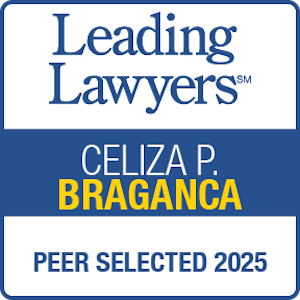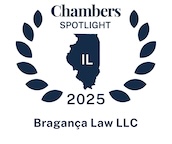- Free Strategy Session: (847) 906-3460 Tap Here to Call Us
Blockchain for Commercial Litigators

It’s crucial for attorneys to understand the basics of blockchain technology and cryptocurrencies. Why? The topic of blockchain technology and cryptocurrencies may arise in a number of different types of legal cases.
For example, cryptocurrencies such as Bitcoin could be considered marital assets that are subject to division in a divorce. If you’re a divorce attorney, you cannot handle the division of these assets if you don’t understand them.
Many probate cases could also involve cryptocurrencies. As an attorney, you must know how to distribute these assets if they belong to the estate. Tax attorneys must also be familiar with blockchain technology and cryptocurrencies in order to effectively represent their clients.
Because blockchain technology could arise in so many cases, it’s important for attorneys to understand how to handle this complex issue in litigation.
What Does the Judge Know About Blockchain Technology and Cryptocurrency?
The first thing you need to do in litigation is figure out how much the judge knows about blockchain technology and cryptocurrencies. What does the judge think it is? Is the judge going to tune out whenever you mention blockchain technology? Does the judge think that cryptocurrency is a physical asset? You need to know the answers to these questions to determine how to approach this issue in the courtroom.
For example, if the judge does not know anything about blockchain technology, you will need to start by explaining the basics. The judge won’t understand the more advanced aspects of your argument if he doesn’t know the first thing about the technology.
How Can You Explain Blockchain Technology and Cryptocurrency in Court?
It’s important to start introducing the topic of blockchain technology and cryptocurrency early on in your case. Don’t wait until the trial starts to educate the judge.
Using analogies is a good way to simplify this complicated topic. The train and train track analogy is one simple and straightforward analogy. Blockchain is the railroad track and Bitcoin and other cryptocurrencies are the train moving along the track. That gives folks something to start with in understanding these technical concepts.
Do not expect the judge and jury to be able to decipher a Bitcoin transaction on their own. Screens showing bitcoin transactions are filled with many long strings of numbers and letters identifying transactions and wallets. They are intimidating.
After you take the time to explain what the information on these transactions are, use something less confusing to depict the transactions. Use visual aids to show each Bitcoin transaction. You can use pictures or graphics of people, wallets, and Bitcoin to illustrate the transaction in a way that is easy for the judge and jury to understand. Again, it’s best to introduce these visual aids early on instead of waiting for the trial to begin. The earlier you introduce them, the better, so try to start using them as early as the complaint if you can.
How Can You Get Bitcoin Transactions Admitted Into Evidence?
Commercial litigators need to start thinking about foundation and authentication early in the case as well. A lot of litigators think that Bitcoin transactions are similar to business records, which means they won’t have any trouble getting these transactions admitted. But, that’s not true. For bank statements, you can call a record’s custodian as a witness to establish the necessary foundation. But there is no Bitcoin record’s custodian. None.
How can you get Bitcoin transactions admitted into evidence? The first step is showing that a Bitcoin transaction is authentic – that is the transactions is what it purports to be. This is like calling a photographer to testify that the copy of a photograph to be admitted is a true and accurate depiction of the photograph she took of the accident scene. How are you going to do that for a Bitcoin transaction? There are programs that allow you to view a Bitcoin transaction on blockchain. Think of this program as a camera that allows you to take a picture of something that exists in the world and bring it into the courtroom.
You need to call an expert witness who can verify that the program takes an accurate “picture” of the Bitcoin transaction. The expert can confirm that the program depicts a true and correct copy of what is on the blockchain.
Next, you need to prove that the blockchain transaction information presented by the program is reliable, particularly when your opponent claims that blockchain transactions can be manipulated or hacked. How do you respond? You need an expert to testify that blockchain transactions are generally reliable and generally immutable. That expert can talk about how blockchain transactions are recorded on “nodes” all over the world so it would be extremely difficult to hack all those nodes. Moreover, the cryptography used by blockchains makes it virtually impossible to manipulate recorded transactions.
At this point, you’ve already showed the judge and jury that a transaction occurred between two parties. But now, you must focus on identifying each party involved in the Bitcoin transaction. You may need a forensic expert to analyze a computer to determine who the sender or receiver is in the transaction. For example, in a probate case, a forensic expert may need to analyze the decedent’s computer to find metadata (electronic evidence) that the decedent used a particular wallet. If an employee is accused of stealing Bitcoin, a forensic expert can analyze the employee’s computer to look for evidence that the employee transferred Bitcoin from the company’s wallet.
The key is to think about these things from the beginning. As you can see, you might need as many as three experts to lay the foundation to have a Bitcoin transaction admitted into evidence. That is a lot more expense and hassle than you would have getting bank records or telephone records into evidence. This is not something that you simply cannot start thinking about a month before trial.
Learn More About Blockchain for Commercial Litigators
There’s no doubt that blockchain technology is a complex topic. If you would like to learn more about blockchain technology and cryptocurrencies, contact Bragança Law by calling (847) 906-3460 or emailing Lisa@SECDefenseAttorney.com.























